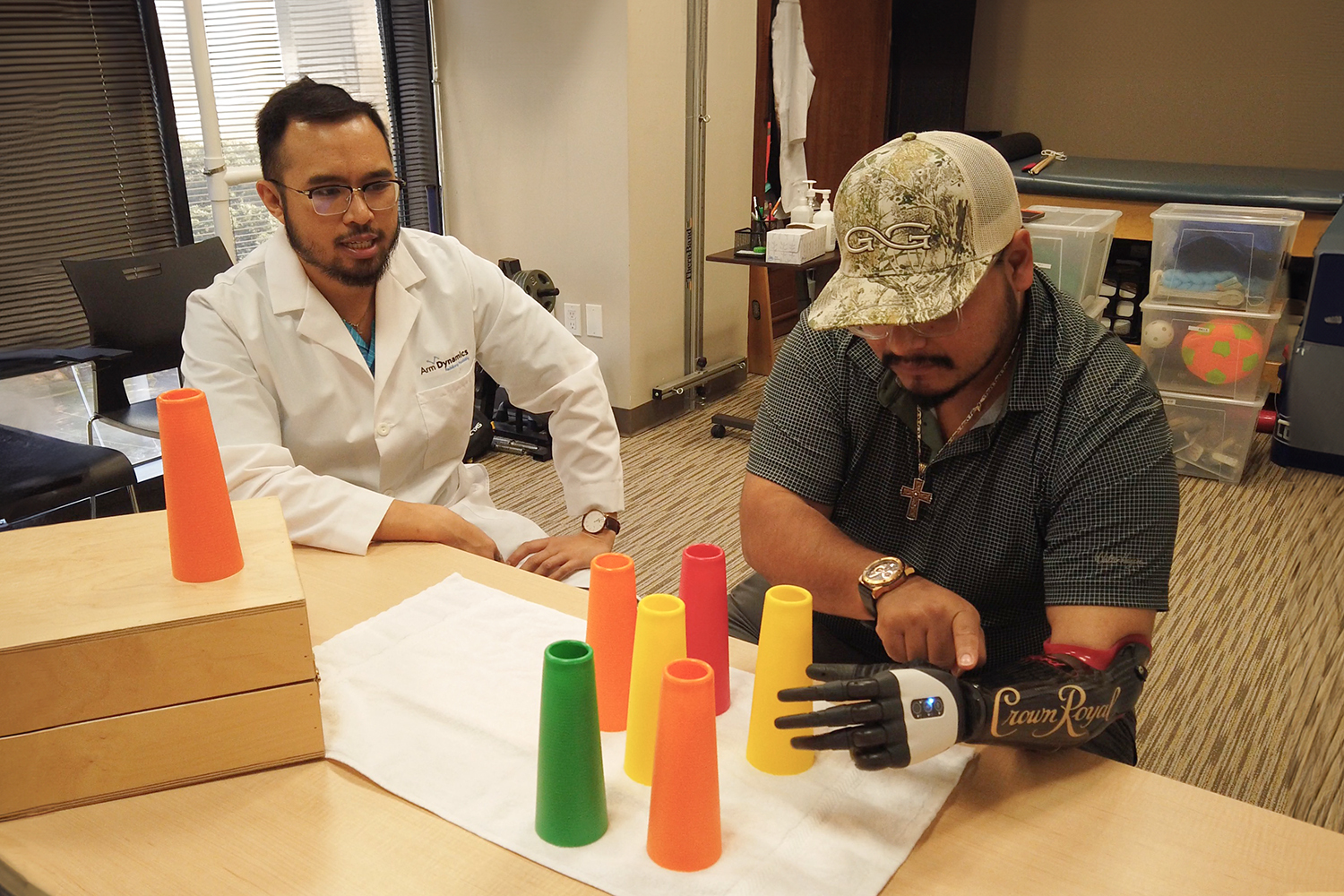After losing some or all of an upper limb, it can be hard for someone to quantify all the things they can no longer do, or no longer do the same way they did before. Or if someone has a congenital limb difference, they may have simply gotten used to doing their daily tasks using one arm. Because there are, relative to lower limb amputees, so few people with an upper limb difference, there simply have not been a lot of assessment tools designed for people who are missing some or all of an upper limb.
These tools, often used in the medical community, are called outcome measures (OMs). There are two different types of OMs: “patient reported” and “performance.” Patient reported OMs tap into the perceptions of the person with the upper limb amputation. Performance measures “test” what that person is capable of either with or without a prosthesis, using tasks that can be objectively measured and compared.
Our Arm Dynamics clinical therapy specialists utilize outcome measures to guide our patient care and maximize each patient’s rehabilitation potential. Each patient completes one or more OMs before being fit with their device, during the fitting & training process, and again once after they have received their final prosthesis.
We do this for several reasons: patient confidence and comfort, insurance justification, and research purposes to further the science that helps those with a limb difference.
The main goal is getting the patient to where they want to be. Having a prosthetic device that both functions well and allows the patient to function how they want is the most important reason we focus on outcome measures. OMs help us determine if a patient can perform their work or activities of daily living without difficulty. When the patient’s goals are met, that leads to more patient confidence and longer wear time, not to mention lower abandonment rates.
Among the suite of OMs that we use, we have developed and tested CAPPFUL®, CAPROQ®, CAPROQ-S, and Wellness Inventory assessments that when combined, offer a broader understanding of the person and the challenges they’re facing. You can learn more about these assessment tools on our page dedicated to them.
The Process: Before, During and Beyond
Throughout the rehabilitation process, we utilize patient reported OMs and performance-based measures to gauge the progress of the patient, both subjectively (per the patient’s perception) and objectively to see if we are heading in the right direction. We capture data from the patient before they are even fit with a device, and at several time points along the way. Long term follow up is important to us because we want to ensure that gains are sustained. About six to twelve months after fitting with their definitive prosthesis, we find it helpful to check in with our patients and we administer OMs again. This gives us a long-term look at the progress of the patient.
At each point, the results can guide our care and clinical decision making regarding the patient’s prosthesis. The results also guide future care for the same patient, or even other patients with a similar presentation.
We understand that measuring these OMs takes time and dedication from both the patient and our clinical team. But we know that at many other prosthetic providers, when OMs are not used, the lack of thoughtful assessment can result in discomfort and reduced functionality for the patient. These, in turn, can lead to less prosthetic wear time, and possibly even the patient abandoning their prosthesis.
Surveys show that, on average, our patients wear their prosthesis at least eight hours per day — enough for a full work day and often more. We know that one of the reasons for that is our out-of-the-box thinking when it comes to learning about our patients, their goals and what they are capable of during every step of their process.
In our efforts to support industry development for the upper limb loss community, we have and continue to collaborate with the U.S. Food and Drug Administration to research and examine the measures created by our team and evaluate the findings generated through our data collection efforts.
We have a more in-depth page on our site where you can learn about our outcome measure tools. Are you ready to learn more about what our clinical teams can offer, either as someone with a limb difference or as a therapist or other healthcare professional? Please contact us. If you have experience either with Arm Dynamics’ OMs, or you have familiarity with the OMs of other prosthetic care centers, and would like to comment on either, we’d love to hear your feedback or thoughts in the comment section below. Thanks for learning more about outcome measures with us!






%20President%20and%20Senior%20Clinical%20Director.jpg?width=600&height=600&name=John%20M.%20Miguelez%2c%20CP%2c%20FAAOP(D)%20President%20and%20Senior%20Clinical%20Director.jpg)










No Comments Yet
Let us know what you think